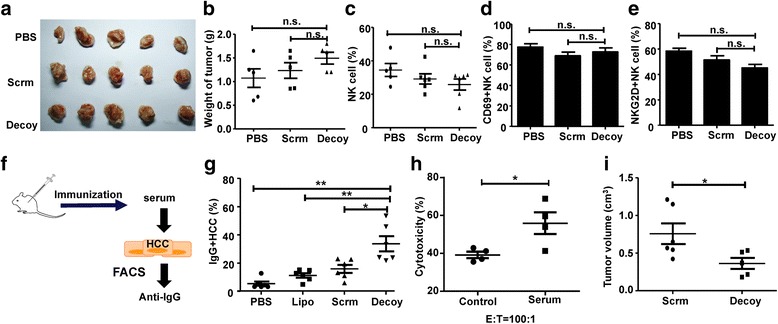Fig. 5.

The HCC vaccine-induced anti-tumor effect was dependent on cellular and humoral immunity. Nude mice were inoculated subcutaneously with 2 × 106 H22 cells after three rounds of immunization with the HCC vaccine. The tumor volume (a) and tumor weight (b) were detected at week 4. c-e PBMCs were isolated when the tumor was visible, and the proportion of NK cells (c), and the expression of CD69 (d) and NKG2D (e) on NK cells were detected by FACS. f-h Hepa1–6 cells were cultured with the serum from C57BL/6 mice immunized with the HCC vaccine for 4 h at 1% concentration. IgG+ cells were labeled by anti-mouse IgG antibody and analyzed by FACS (g); and, the cytotoxicity of spleen lymphocytes obtained from mice untreated with these Hepa1–6 cells was analyzed by 7-Aminoactinomycin D (7-AAD) staining methods (h). i BALB/c mice were immunized with H22 tumor vaccine once a week for three weeks. The PBMCs were isolated one week after the last immunization and transferred into healthy pre-irradiated BALB/c mice. After one week, these receptive mice were inoculated subcutaneously with 2 × 106 H22 and the tumor volumes were measured after four weeks. Data are expressed as the mean ± SD, statistical significance was determined as *p < 0.05 and ** p < 0.01 (n = 4–6)
